Discover 11 hidden attractions, cool sights, and unusual things to do in Exeter (United States). Don't miss out on these must-see attractions: American Independence Museum, Front Street Historic District, and Gilman Garrison House. Also, be sure to include Exeter Historical Society in your itinerary.
Below, you can find the list of the most amazing places you should visit in Exeter (New Hampshire).
Table of Contents
American Independence Museum
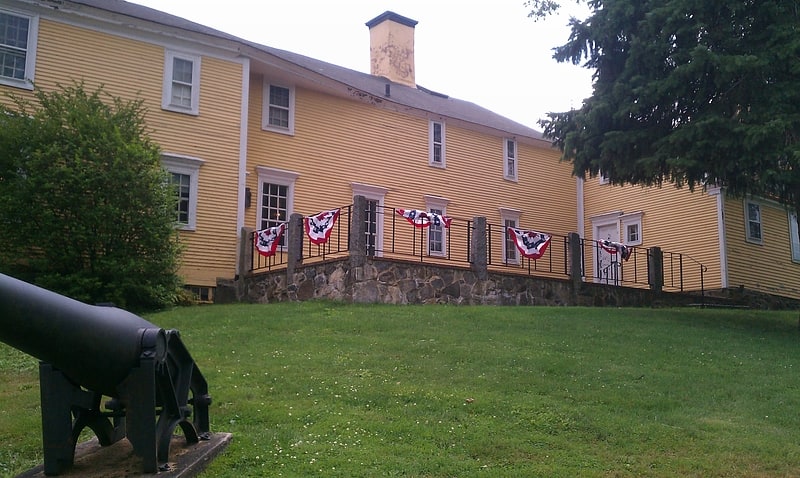
Museum in Exeter, New Hampshire. The American Independence Museum is a historic house museum located in Exeter, New Hampshire. Its 1-acre campus includes two buildings: the Ladd-Gilman House, a registered National Historic Landmark built in 1721 by Nathaniel Ladd, and the Folsom Tavern, listed on the New Hampshire State Register of Historic Places and built in 1775 by Colonel Samuel Folsom. The museum was opened in 1991 after a rare copy of the Declaration of Independence known as a Dunlap Broadside was found in the Ladd-Gilman house, 200 years after its arrival in Exeter. It is the centerpiece of the museum’s collection. The museum’s mission is “Connecting America’s Revolutionary past with the present.”[1]
Address: 1 Governors Ln, 03833-2420 Exeter
Front Street Historic District
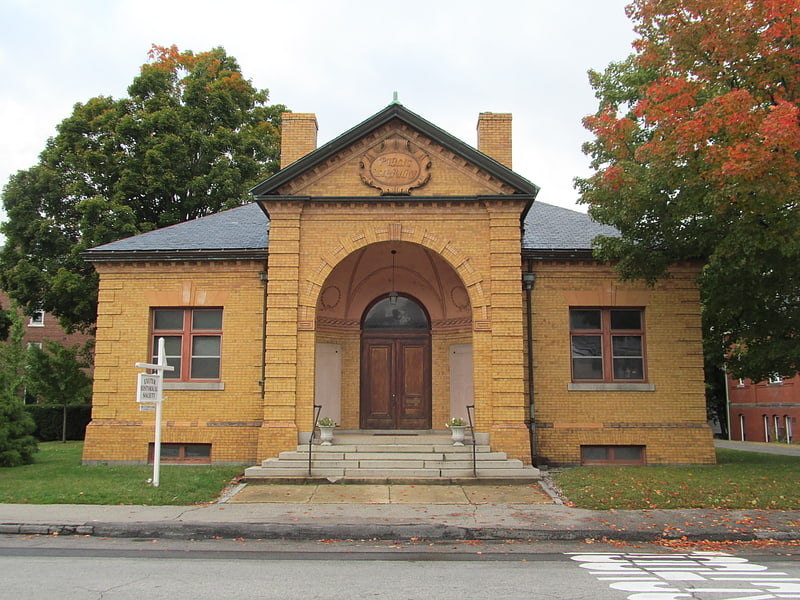
The Front Street Historic District in Exeter, New Hampshire, encompasses a portion of the town's historic center. The district extends from Swasey Pavilion, at the junction of Front and Water streets, southwesterly along Front Street to Gale Park, about five blocks. Front Street is one of Exeter's oldest roads, and is lined with a series of 18th and 19th-century civic, religious, and residential structures, many of which are well preserved. The district was listed on the National Register of Historic Places in 1973.[2]
Gilman Garrison House
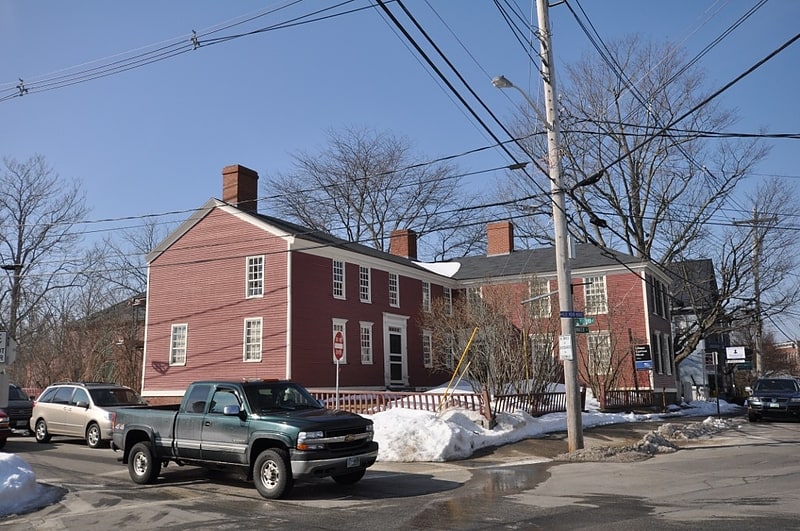
Museum in Exeter, New Hampshire. The Gilman Garrison House is a historic house museum at 12 Water Street in Exeter, New Hampshire. Built in 1709, it is a rare surviving example of a garrison house or fortified structure. It is owned by Historic New England, which operates the home as a house museum, and was listed on the National Register of Historic Places in 1976.[3]
Address: 12 Water St, 03833 Exeter
Exeter Historical Society
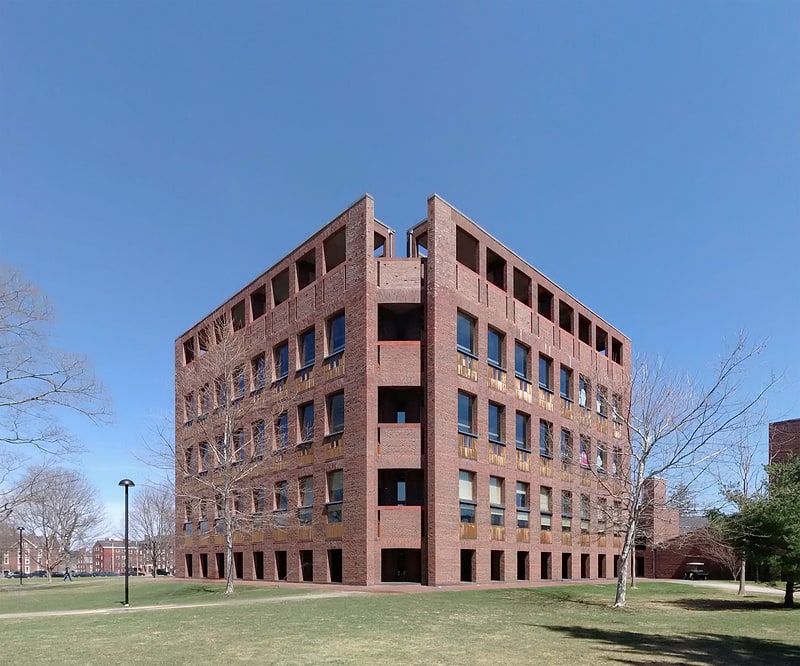
Library. Phillips Exeter Academy Library is a library that serves Phillips Exeter Academy, an independent boarding school located in Exeter, New Hampshire. It is the largest secondary school library in the world, containing 160,000 volumes over nine levels with a shelf capacity of 250,000 volumes.
When it became clear in the 1950s that the library had outgrown its existing building, the school initially hired an architect who proposed a traditional design for the new building. Deciding instead to construct a library with a contemporary design, the school gave the commission to Louis Kahn in 1965. The library opened in 1971. In 1997 the library received the Twenty-five Year Award from the American Institute of Architects, an award that recognizes architecture of enduring significance that is given to no more than one building per year.
Kahn structured the library in three concentric square rings. The outer ring, which is built of load-bearing brick, includes all four exterior walls and the library carrel desks immediately inside them. The middle ring, which is built of reinforced concrete, holds the heavy book stacks. The inner ring is a dramatic atrium with enormous circular openings in its walls that reveal several floors of book stacks.[4]
Address: 47 Front St, 03833-2707 Exeter
The Congregational Church in Exeter
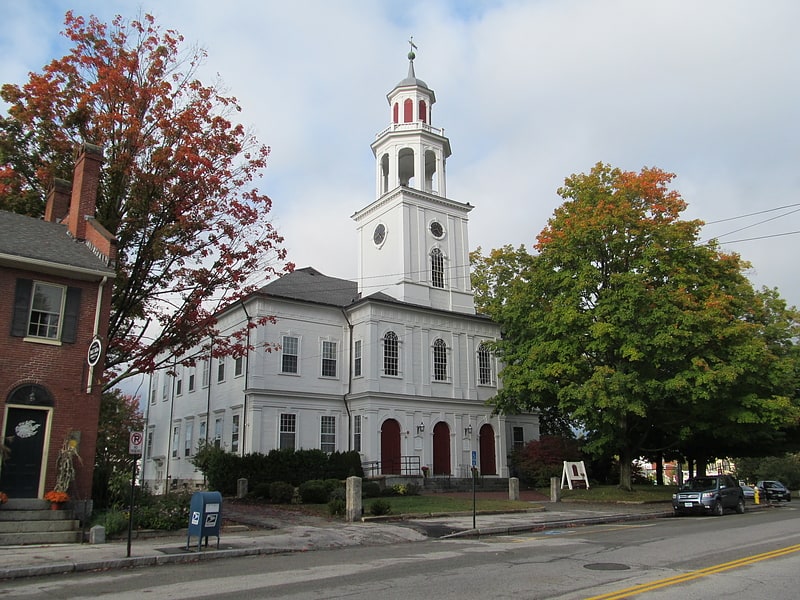
Building in Exeter. The Congregational Church in Exeter was gathered in 1638 by the Rev. John Wheelwright following his expulsion from the Massachusetts Bay Colony. The current congregation is a merger of the former First Parish and Second Parish of Exeter. Second Parish split from First Parish in the 1700s during the Great Awakening over theological differences. The two congregations then reunited in 1920.
Nicholas Gilman, a signer of the Declaration of Independence, was a member of the church. During the schism of the two congregations, Phillips Exeter Academy was founded by John Phillips and other members of the Second Parish. The current Phillips Exeter Academy chapel now occupies the building of the former Second Parish. Church member Amos Tuck was keenly involved in early efforts to address the abolition of slavery, and held meetings on the subject at the church.
Today, the church has an active membership, a Sunday School, and various mission and outreach programs. The current Senior Pastor is author and minister the Rev. Dr. Emily C. Heath. The congregation is a member of the United Church of Christ. It has been an Open and Affirming (actively welcoming LGBTQ people) congregation since 1996. They are also partnered with a church in Pfizda, Zimbabwe, and work to help prepare housing for refugees settling in New Hampshire, and give to a number of local non-profits.
The current building, located at 21 Front Street in Exeter, New Hampshire, was built in 1798 and can seat 400 people. It is the fifth meeting house built by the congregation, and was designed by Ebenezer Clifford, a local builder. The building has a number of distinctive features. Its hip roof is believed to be the earliest such roof built on a church in the state, and its only entrances were through the projecting entrance bay (unlike earlier traditional meeting houses, which had entrances on three sides). In 1838 the interior of the building was remodeled, removing box pews, and converting the gallery to a full second floor. The sanctuary is now located on the upper level, with meeting rooms and other facilities below. An addition was made to the rear of the church in 1930, giving it a more square footprint.
The building was listed on the National Register of Historic Places in 1971 as The Congregational Church (United Church of Christ) and alternately The First Church. It is included in the Front Street Historic District. Notable items inside the church include the pew in which Abraham Lincoln sat when he came to visit his son at the nearby Phillips Exeter Academy, a portrait of Lincoln, and a portrait of the Rev. Wheelwright. The church sanctuary organ is an Aeolian-Skinner with three manuals and 20 ranks of pipes, dedicated in 1951. There is a small, working memorial garden at the side of the church, in which are also buried town fathers Folsom and Gilman.
In literature, the church building figures in John Irving's 1989 novel A Prayer for Owen Meany. Irving grew up in the congregation.[5]
Address: 21 Front St, 03833 Exeter
Exeter Waterfront Commercial Historic District
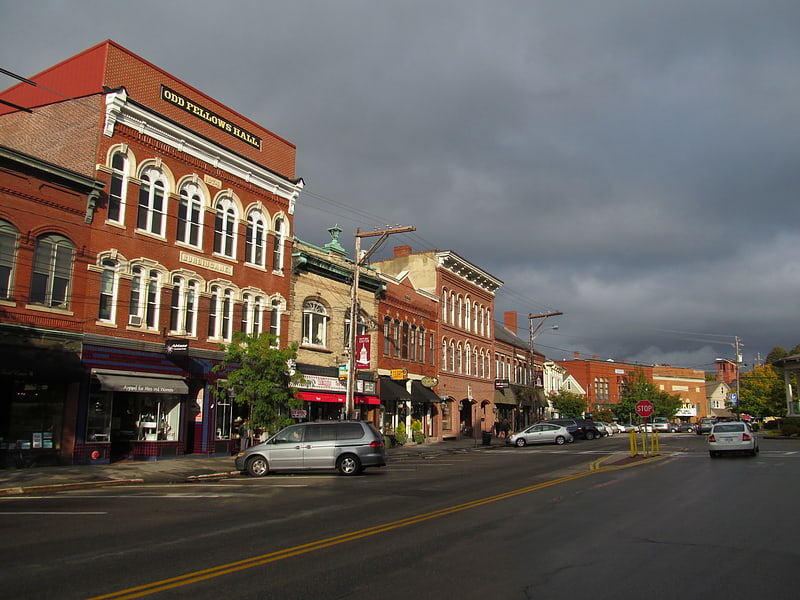
The Exeter Waterfront Commercial Historic District encompasses the historic commercial and residential waterfront areas of Exeter, New Hampshire. The district extends along the north side of Water Street, roughly from Main Street to Front Street, and then along both sides of Water and High streets to the latter's junction with Portsmouth Street. It also includes properties on Chestnut Street on the north side of the Squamscott River. This area was where the early settlement of Exeter took place in 1638, and soon developed as a shipbuilding center. The district was listed on the National Register of Historic Places in 1980. It was enlarged in 1986 to include the mill complex of the Exeter Manufacturing Company on Chestnut Street.[6]
Ladd-Gilman House
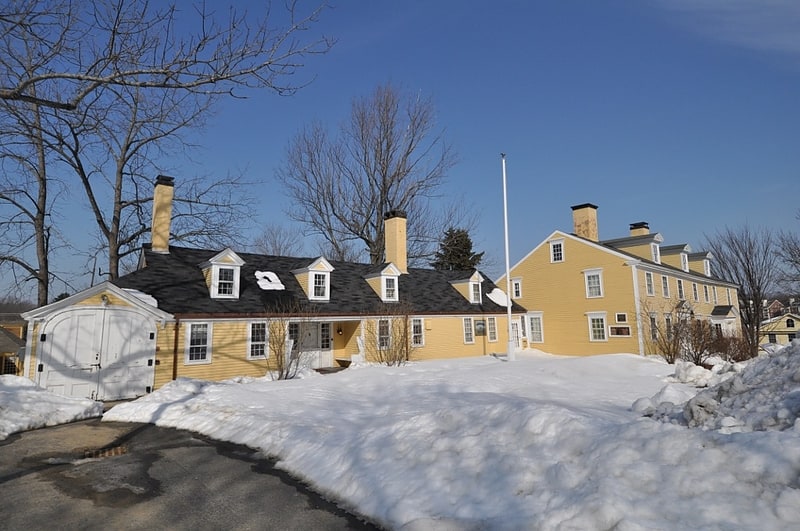
The Ladd-Gilman House, also known as Cincinnati Memorial Hall, is a historic house at 1 Governors Lane in Exeter, New Hampshire, United States. The home was built about 1721 by Nathaniel Ladd as one of the state's first brick houses, and was subsequently clapboarded three decades later. The home was purchased in 1747 by Daniel Gilman, a prominent Exeter merchant. It served as the state treasury during the American Revolutionary War when two members of the Gilman family, Col. Nicholas Gilman and his son John Taylor Gilman, later the state's governor, served as treasurers of the state. Also born in the house was Nicholas Gilman, Jr. a signer of the United States Constitution and U.S. senator from New Hampshire.
The Ladd-Gilman House was declared a National Historic Landmark in 1973, principally for its association with Nicholas Gilman, Jr. It has been maintained since 1902 by the Society of the Cincinnati, in which organization the Gilman family took a prominent role. The Ladd-Gilman House and its grounds are part of the campus of Exeter's American Independence Museum.[7]
Maj. John Gilman House
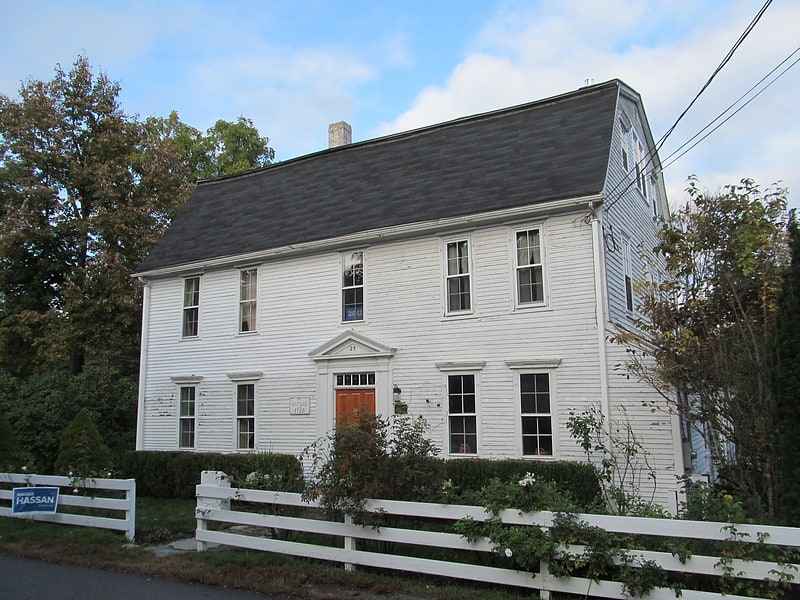
The Maj. John Gilman House is a historic house at 25 Cass Street in Exeter, New Hampshire, United States. Built in 1738, it is a well-preserved example of a Georgian gambrel-roof house, further notable for its association with the locally prominent Gilman family. It was listed on the National Register of Historic Places in 1988.[8]
Dudley House
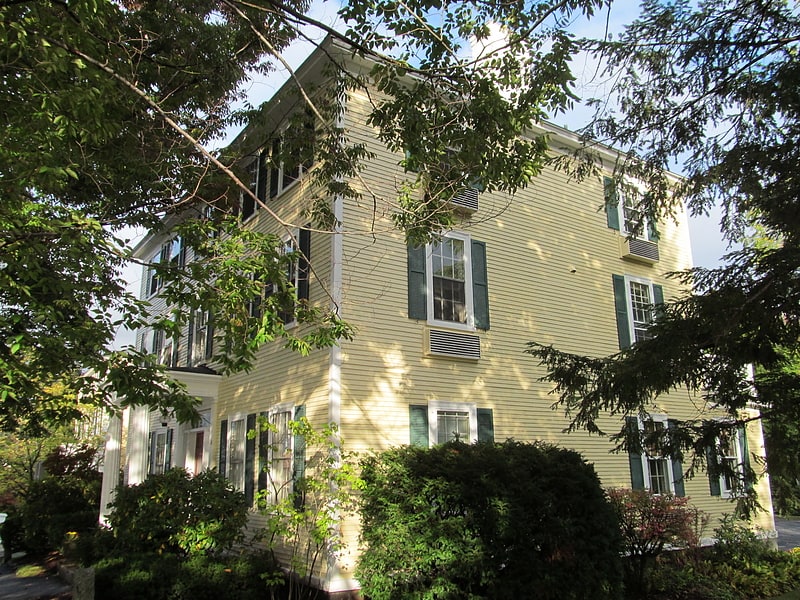
The Dudley House, also known as the Perry-Dudley House, is a historic house at 14 Front Street in Exeter, New Hampshire. Built about 1805, it is a prominent local example of Federal architecture, further notable for its occupation by two of the town's leading 19th-century doctors. The house was listed on the National Register of Historic Places in 1971. It now houses professional offices.[9]
Samuel Tenney House
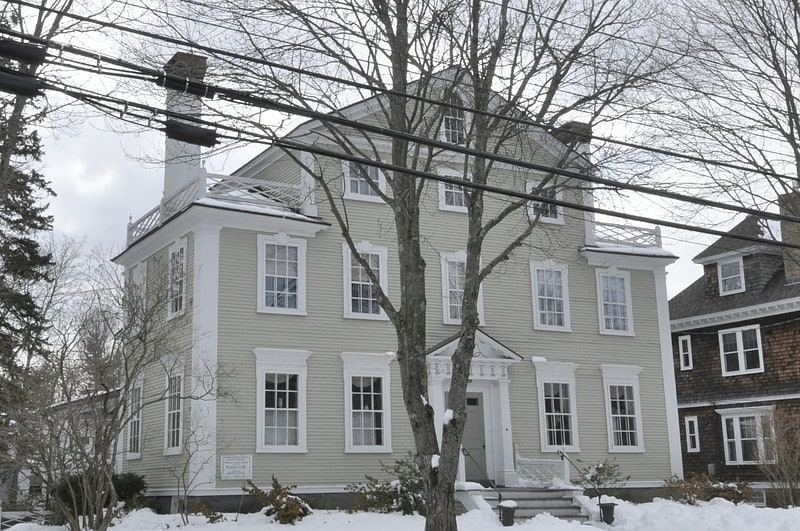
Building in Exeter. The Samuel Tenney House is an historic house at 65 High Street in Exeter, New Hampshire. This mansion was built circa 1800 as the primary residence of Samuel Tenney, a noted scholar, scientist, physician, American Revolutionary War surgeon, patriot, judge, and member of Congress, and his wife Tabitha Gilman Tenney, the noted early American author.
The master carpenter for the house was Ebenezer Clifford working with Bradbury Johnson. At the time, Clifford lived in the Gilman Garrison House, now owned by Historic New England. They also built the First Church, Exeter; the second Phillips Exeter Academy main building; and the Atkinson Academy building.
Mrs. Tenney died in 1837, and the house was later occupied by Tristram Shaw, who was a member of the U.S. House of Representatives, representing New Hampshire from 1830 until his death in 1843. In January 1892, Dr. George W. Dearborn purchased the Samuel Tenney House from Frank H. Hervey.
Today the house is located at 65 High Street, having been relocated there in 1893 from its original location in the center of Exeter, next to and north of the First Church on Front Street, to accommodate construction of the Rockingham County Courthouse. On November 25, 1980, the building was added to the National Register of Historic Places.[10]
Moses-Kent House

The Moses-Kent House is a historic house at 1 Pine Street in Exeter, New Hampshire. Built in 1868 for a prominent local merchant, it is one of the town's finest examples of Victorian residential architecture. It was added to the National Register of Historic Places on September 12, 1985.[11]